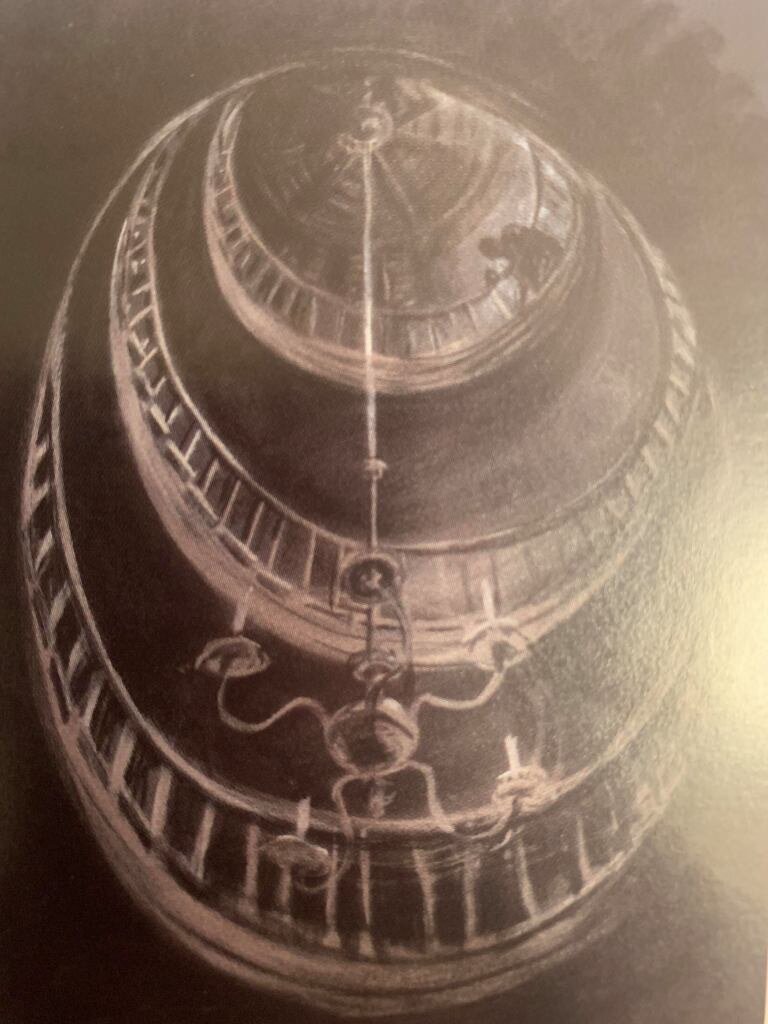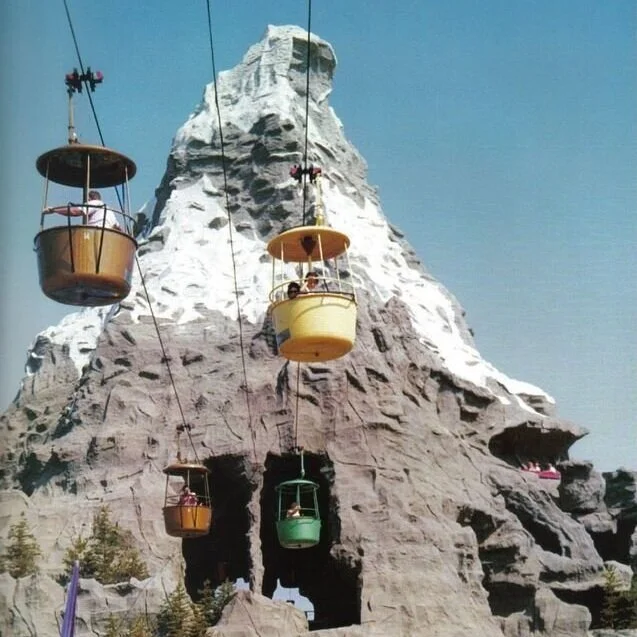E-Ticket: Disneyland's Ghost House
When I visited the Walt Disney Family Museum in July, I picked up several (too many) E-ticket magazines. In a magazine-like format, each one lays out the history, stories and details of building specific rides. They're named after the tickets that you used to have to purchase when Disneyland first opened. Today I'm going to be covering what the E-ticket says about Disneyland's Haunted Mansion.
The article about the Haunted Mansion is written by Disney imagineer Ed Squair.
In 1951, Harper Goff created a sketch of what he felt the Haunted Mansion should look like, and where in the park it should be located. He placed it on Main Street, to hover over all of the other otherwise joyous looking buildings on the street. Ken Anderson continued developing that idea in 1957, and created a full map and models of the house. He moved it over slightly from its original spot, into what would later become New Orleans Square. The goal of Ken Anderson was to make the house feel like it was from the 50s, and leave the imagination of why the house became haunted up to us. Despite the date of it all, they modeled the house after New Orleans homes in the 1800s. They did want the iron gates that we see today, and for the house to be a large, towering, grand mansion. However, they wanted the details to speak for themselves, as having items falling off the house, overgrown trees and bones along the pathway would make it creepier. (Squair, 2004).
The Ghost House's backstory by Walt Disney
Disney called the house Bloodmere, as the estate used to belong to the Blood family. It was abandoned, so it was picked up and moved to Disneyland to share its beautiful historic architecture. He continued saying that Disneyland workers attempted to fix it up each day, but somehow their work would be erased and reversed each night (Squair, 2004).
Walt continued his story saying they asked the people they received the house from in New Orleans what they think might be happening, and they said the family that used to live in there died sudden and unfortunate deaths, and they are very unhappy ghosts. Walt deemed the house too dangerous to live in, but it's okay to visit (Squair, 2004).
Ken Anderson created many fully realized sketches of how he wanted the Haunted Mansion's details to look, and most of them ended up in the theme park ride.
Anderson's ideas
Anderson had drew a picture of a spiral staircase from the POV of looking up, and you can see a shadowy figure looking down at you from one of the railings (Squair, 2004). It is similar to the ceiling in the stretching room today, when the elevator drops if you look up, you can see a skeleton hanging from the ceiling. Perhaps these are the same people? You decide.
Two other details that Anderson had that were included are the hallway walk through at the beginning of the ride where the line is, and the portraits hanging on the walls there (Squair, 2004).
Something Anderson had included that did end up making it to Walt Disney World but not Disneyland was a large estate library. It was complete with bookcases, a fireplace, broken windows, a ghost host of course, and a portrait of the Blood family (Squair, 2004). In the original script, it's mentioned that "while the Blood Family was hosting friends on the eve of the real life wedding of their beautiful daughter, an event too horrible to mention prevented the wedding, and it has been rumored that on every anniversary for the last 150 years the ghosts have been attempting to complete the ceremony which would lift the curse on the house." He really wanted the wedding theme to continue throughout the home too, but in the end the only traces we have of that story are the headless hatbox ghost and the bride, Constance Hatchaway.
One thing that wasn't included in the end was a bedroom scene, in which he sketched a very detailed bed frame with lamps and mirrors, completed with a headless ghost reading a floating book (Squair, 2004).
Originally, there were many famous ghosts to be featured in the attraction, such as "Great Ceaser's Ghost, Marley and Scrooge, Little Eva and Simon Legree, the Canterville Ghost, Lucretia Borgia, Anne Bonny, Captain Hook, and King Tut". King Tut is one of the only remaining ghosts still in the attraction today (Squair, 2004).
It's safe for me to say that I'm definitely going to look at the Haunted Mansion a lot differently now that I know some of the back story and the eras that this all took place in. Anderson wrote an entire script, more so a story, of the origins of the home and the family that lived in it. I highly suggest giving it a read if you want to feel even more spooked over the ride. I love that this ride feels completely separate from the rest of the park too, as it has its own story instead of just being an adapted ride, it has a completely different look than anything else in the park, and it fits perfectly, tucked away behind the greenery.











